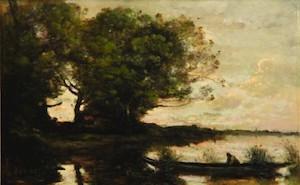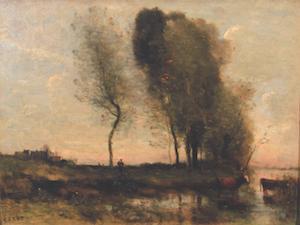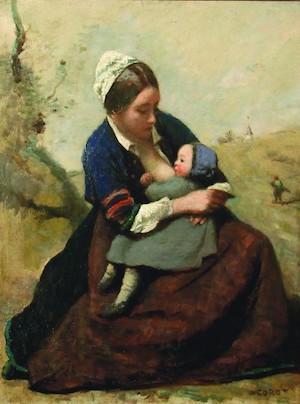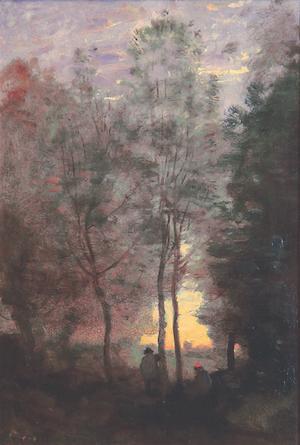Westmont Magazine An Introduction to Jean-Baptiste-Camille Corot
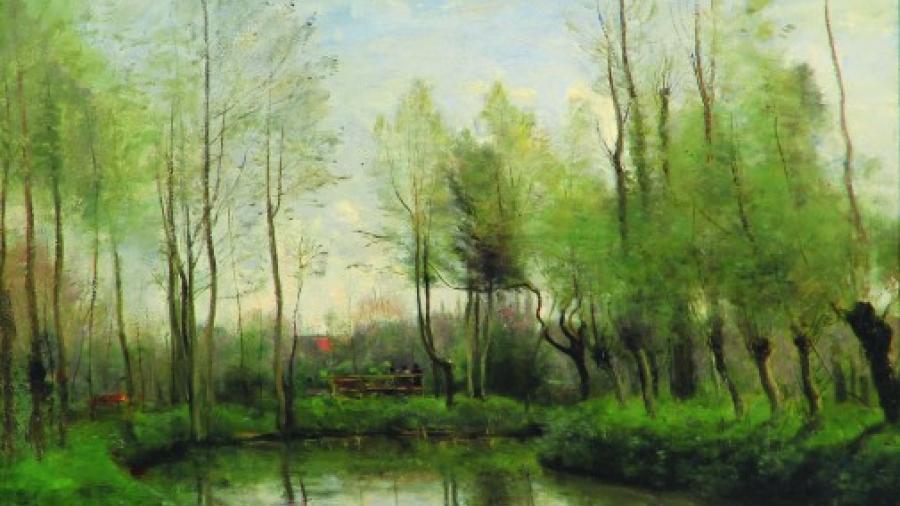
Voisinlieu, Dans le Parc de M. Wallet (Voisinlieu in Monsieur Wallet’s Park), c. 1866, oil on canvas, 13.5inx20.5in
by Judy L. Larson, Askew Professor of Art History and Director of the Westmont Ridley-Tree Museum of Art
Since the end of the 19th century, Corot’s art has been enormously popular in America. Lord Paul and Lady Leslie Ridley-Tree’s collecting interest in Camille Corot follows a well-established fascination with this Barbizon artist who linked the neoclassical landscape traditions to a fresh and innovative way of painting nature. Corot took his paintbrush and paper outdoors, sketching and carefully observing every nuance and detail of his subjects. However, it was Corot’s finished exhibition pictures that brought him lifetime acclaim. The plein air studies Corot created in the artist’s studio became the inspiration for the large, formal works that eventually hung in the Paris salons, and these paintings attracted the attention of the critics.
In 1827, Camille Corot’s first painting was accepted at the Paris Salon; thereafter, he exhibited regularly at this prestigious exhibition, which featured the best of the international contemporary artists. Corot’s canvases surprised and beguiled art critics, fellow artists and art collectors. The works were modern and simple, yet grand. Corot built his landscapes on solid geometric forms. His light-drenched palette of colors, his choice of scenes with luminous atmospheres, and his signature brushwork—at first bold and solid then maturing into a feathery, light touch, were all seen as new and innovative—and not always immediately grasped.
Corot was nearly 30 when he launched his artistic career; 37 before he won a Salon medal; he sold his first painting in his mid-40s; not until age 50 was he recognized as a French master with the award of the Legion of Honor. Success came slowly, but, when it came, Corot kept busy with sales and commissions. He enjoyed recognition in Europe and America, earning substantial prices for paintings. His death in 1875 was followed by a public sale of works; collectors came from all over France, as well as other European countries and America, to purchase his art. Corot was especially popular among American collectors, with buyers seeking Corot’s work from both American and European dealers. Many European dealers, recognizing the buying trend in America for Corot’s and other Barbizon artists’ works, opened branches of their galleries in the United States. Corot was represented in most of the major American art collections, often with multiple works. As the 20th century opened, the great collectors of the Gilded Age were well positioned to bequest hundreds of Corot paintings into relatively new art museums, which had opened at the end of the 19th century and beginning of the 20th century in New York, Philadelphia, Boston, Chicago, Cleveland, Washington, D.C., and other cities.
Different facets of Corot’s artistic career attracted collectors and scholars who focused on the various, meaningful aspects. The wooly, ethereal landscapes with dancing nymphs or strolling peasants of his mature career appealed to the audiences who responded to the poetry of his landscapes. He often titled such works “souvenir”—landscapes based on real places but transformed into idyllic settings through Corot’s imagination. Corot painted the figure throughout his career, but especially focused on figures during the last decade of his career. Only twice did Corot exhibit any figural works; after his death, it was a surprise to critics and collectors alike when more than 300 figurative paintings were discovered in his studio. Corot also kept his oil studies—plein air sketches done directly from nature with broadly brushed plains of color. These works covered the walls of his studio for his own enjoyment. Later, they served as inspiration to the next generation of French landscape artists: the Impressionists.
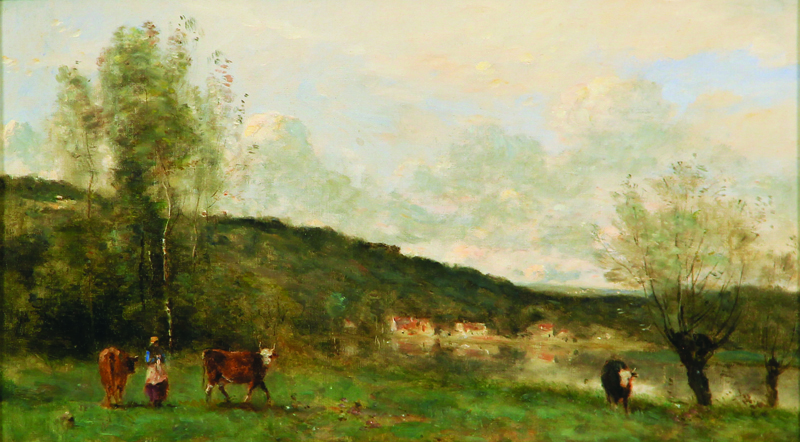
Corot was fascinated with new techniques and materials introduced in the 19th century andoften experimented in creating his art. He took up etching in 1845, using graphic techniques as an extension of his drawing. Corot also worked in lithography. In the 1860s, Corot began making photographs, a practice that honed the artist’s eye for creating the nuances of tonal values. Constant Dutilleux, fellow artist and close friend to Corot, encouraged him to pursue cliché-verre, a printmaking technique that combines etching techniques with photosensitive plates. Cliché-verre could be done quickly and perhaps appealed to Corot because it offered him a means of translating his atmospheric effects of landscape into a graphic medium.
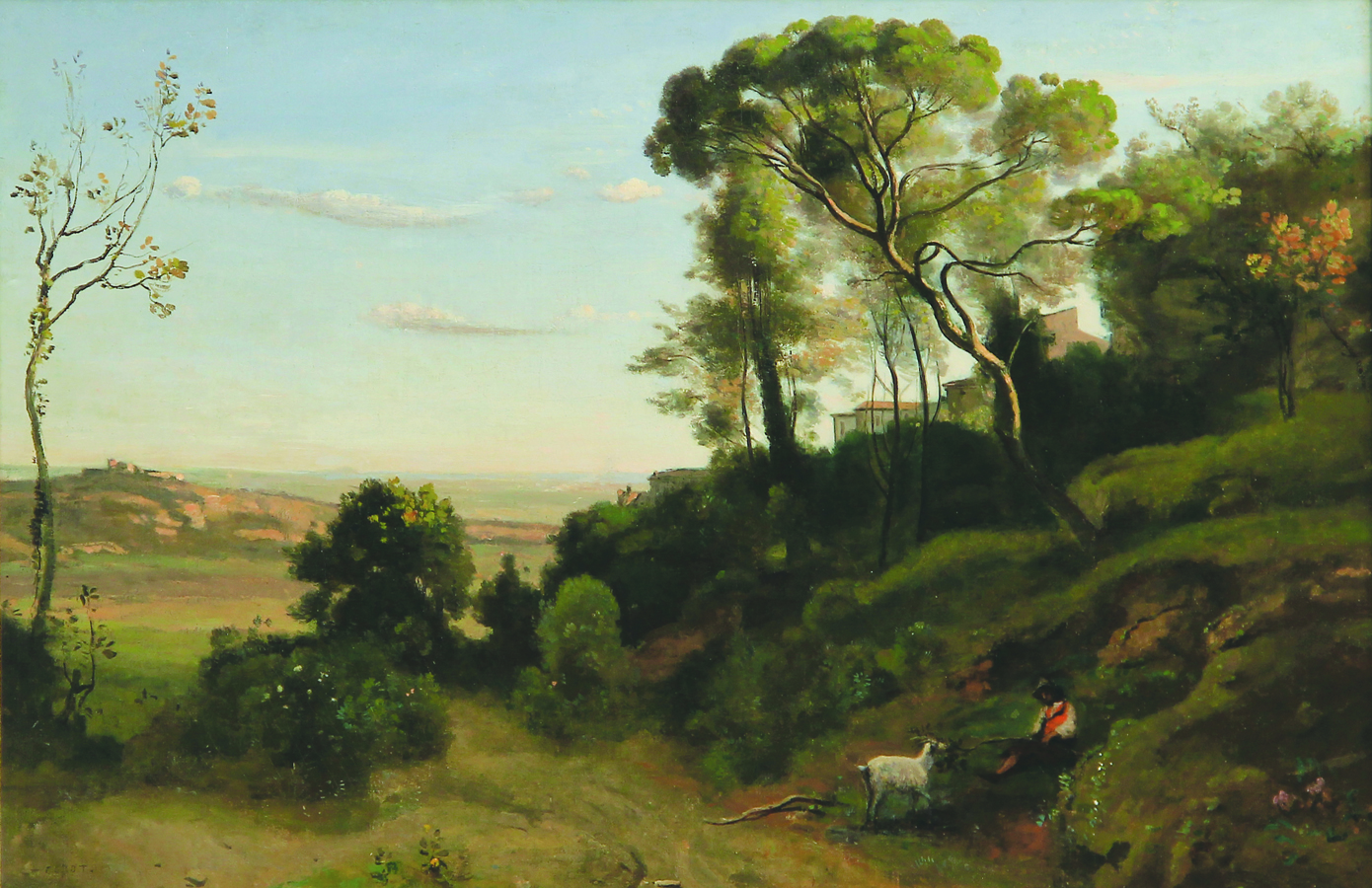
Corot had the gift of a clear vision for his life; his greatest pleasure was in painting. As an artist, Corot was persistent, disciplined and ambitious. From his late 20s to his death at age 79, he painted nearly 3,000 paintings and created a portfolio of lithographs, etchings and clichés-verre. His influence on contemporary landscape painters of his day was enormous. He bridged the gap between the Neoclassical painters, for whom landscape had a serious, moralizing purpose, and Romantic painters, for whom the most important role of nature was to transport the viewer to imaginary places, either full of drama or quietly meditative. His contemporary, Eugène Delacroix, a Romantic master himself, claimed: “Corot is a true artist.”
Corot rarely accepted formal students, but dozens of men and women sought out his advice and help. His keen observations of nature, especially his love of painting the light of sunrise and twilight, certainly inspired this new generation of French painters. Camille Pissarro, Berthe Morisot and Alfred Sisley were pupils of Corot. Renoir was not his student in a formal sense, but certainly studied Corot’s landscapes and created his own variation of Corot’s hazy, scumbled brushwork. Corot’s last figural painting, “Woman in Blue,” inspired Renoir’s “Mrs. Hartmann,” painted that same year, 1874. Renoir said of Corot: “He was the great genius of the century—the greatest landscape artist who ever lived.” In his youth, Monet praised Corot, calling him “the only master. We are nothing to him, nothing….” Degas admired the master enough to purchase at least three Corot paintings for his personal collection.
The Impressionists attached importance to depicting nature accurately—capturing specific weather conditions or the ways that light transformed color. In the early 20th century, the Modernists were more interested in creating art that responded to emotions and the imagination. Corot served as inspiration to many modern artists. Cezanne and Seurat learned from Corot’s structured and geometric compositions. Vincent van Gogh, who owned a Corot painting, praised Corot’s figure paintings. Picasso saw a selection of Corot’s figural works at the 1909 Salon D’Automne, which likely served as the inspiration of his own classical female figures holding mandolins or violins—a direct borrowing from Corot.
Lord Paul and Lady Leslie Ridley-Tree, like so many collectors of Corot, were initially drawn to his landscape paintings for their delicate beauty and ethereal quietude. As Leslie describes it, each Corot speaks in a new voice. Sometimes the Ridley-Trees responded to a specific subject of a painting—the humor in the light-footed stance of a grazing cow or the sweet tenderness of a mother nurturing her child.
The Ridley-Trees also responded to Corot’s painterly touches—like the gentle dabs of Corot’s red accents against verdant greens and moody grays or the serene softness of Corot’s brushwork, which describes a boat at water’s edge at twilight. “I never grow weary of Corot’s landscapes,” says Lady Ridley-Tree. “I find in them a restful beauty. There is something very delicate and highly refined about Corot’s paintings. Paul used to say he wanted to just touch the surface of a Corot, as if the airiness and soft light could be experienced by the fingertips!”
Corot responded to nature with his emotions—transfixed by the beauty of natural harmonies and awe-inspiring luminosities. So too, Lady Ridley-Tree is drawn to the exquisiteness that Corot finds in nature. The 10 paintings, one drawing and 12 lithographs in the Ridley-Tree collection, paired with works borrowed from museums and private collections, offer intimate insights into Corot’s love of nature. These are not the large exhibition pictures that brought attention at the Parissalons. Instead, we see the observant Corot who relished every detail of nature, the radiance of a light, the softness of a hazy fog, or the weariness of a slow-footed peasant walking home at dusk.
The Westmont Ridley-Tree Museum of Art is grateful to Lady Leslie Ridley-Tree for her generous bequest of Corot works. Generations of students at Westmont will learn from this Corot collection, and our Santa Barbara community visitors will discover anew the virtuosity and luminosity of Jean-Baptiste-Camille Corot.
